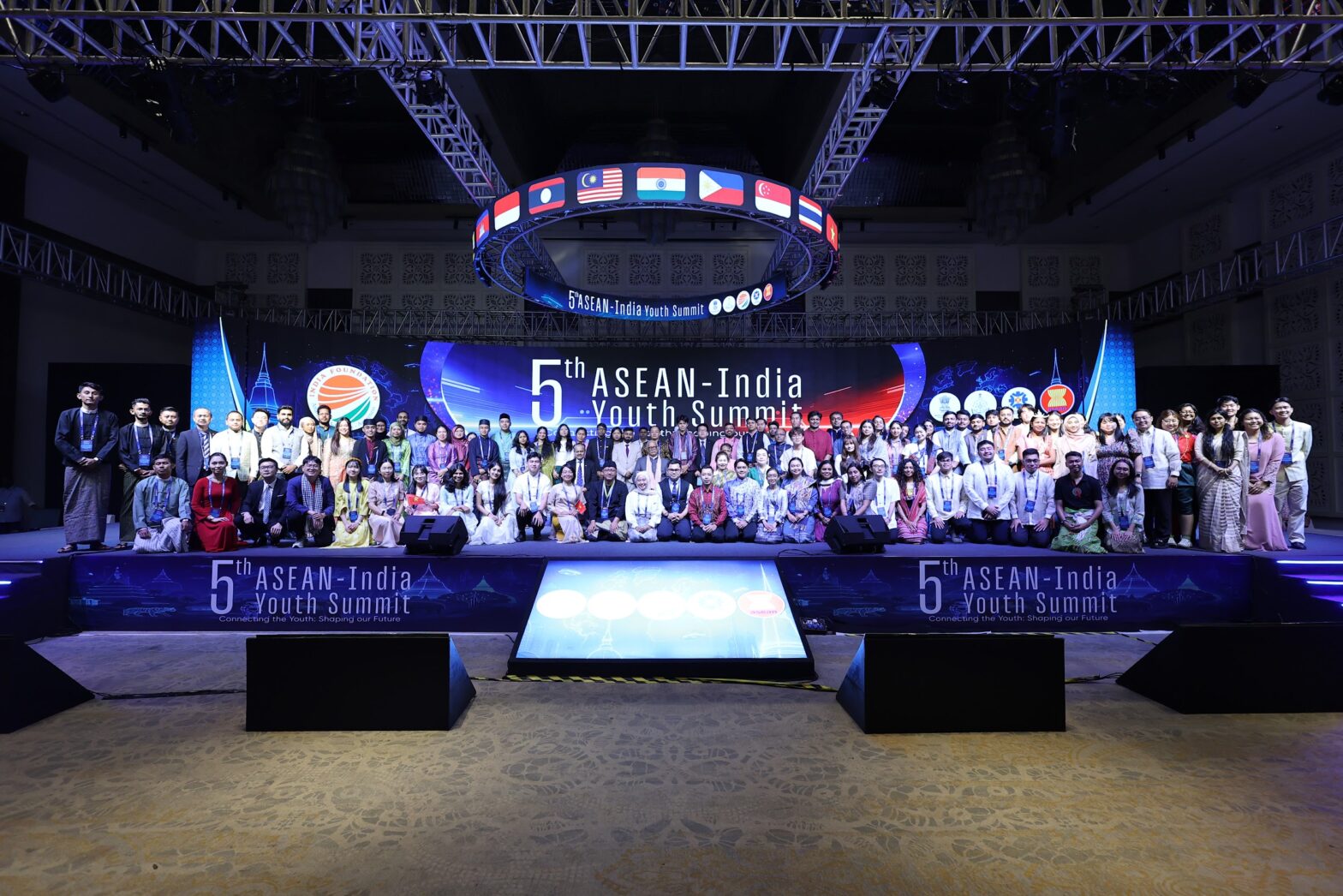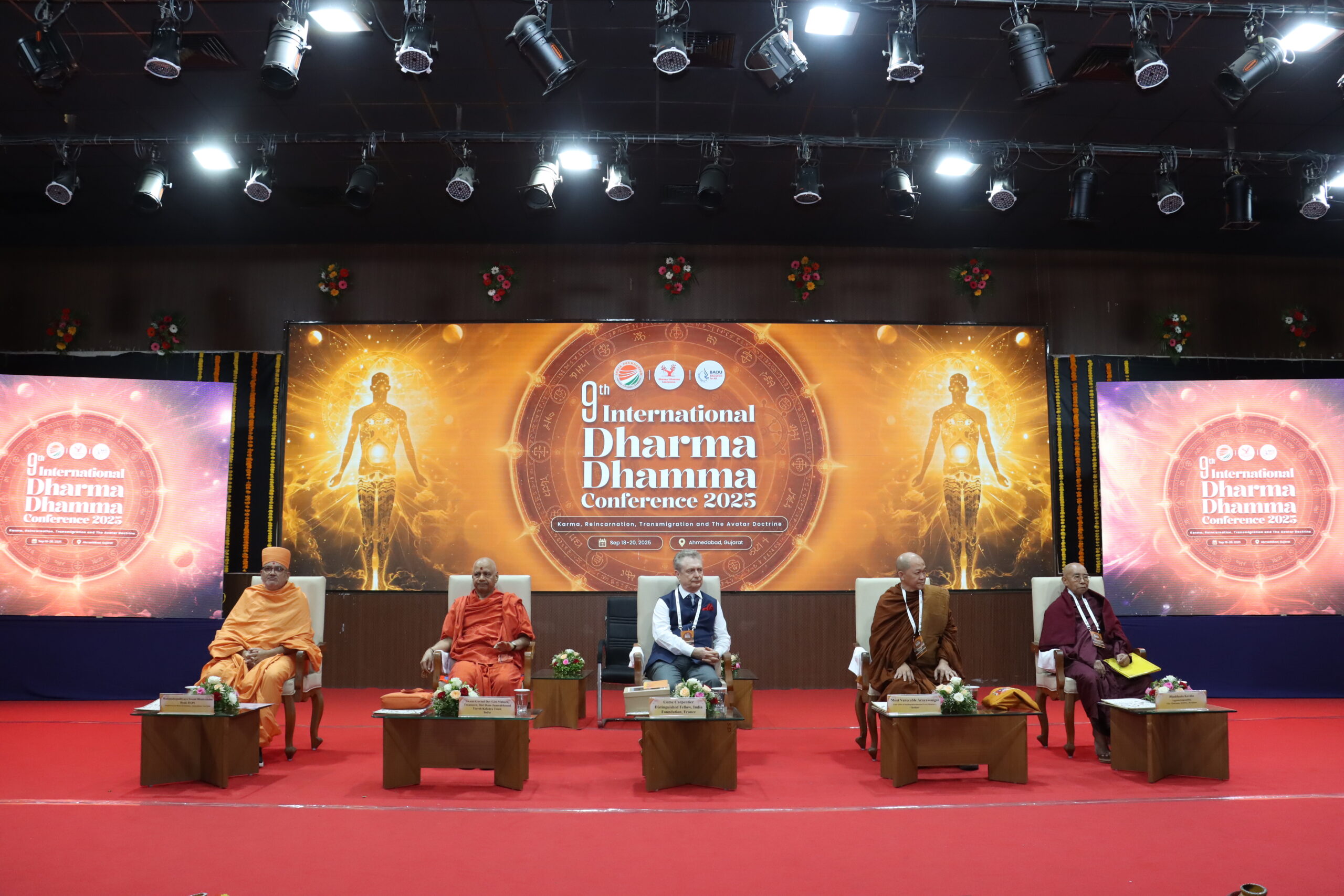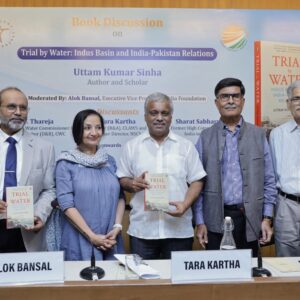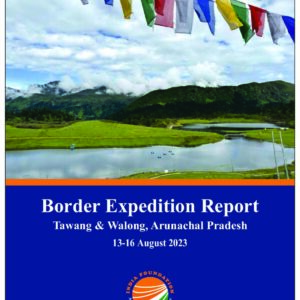

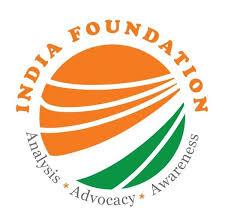
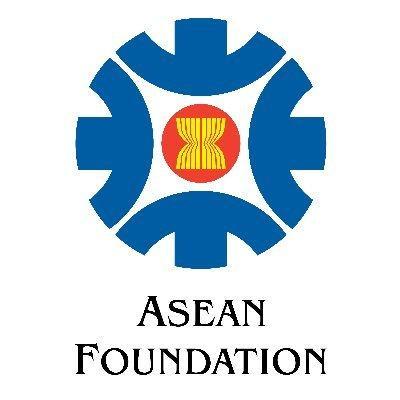

The 5th ASEAN–India Youth Summit, held in Goa from 27–31 August 2025, brought together more than a hundred youth delegates, policymakers, diplomats, and academicians from ASEAN member states and India. Organised by India Foundation in collaboration with the Ministry of External Affairs, the Government of Goa, and the ASEAN Secretariat, the summit revolved around the theme “Connecting the Youth: Shaping Our Future.” Over the course of five days, participants engaged in plenary sessions, policy labs, country presentations, and cultural exchanges, all of which reinforced the idea that youth are not only future leaders but also present changemakers capable of steering ASEAN–India relations toward inclusivity, innovation, and sustainability.
India and ASEAN share deep cultural and civilisational linkages that today underpin one of the most dynamic partnerships in Asia. Since establishing dialogue relations in 1992, cooperation has expanded across politics, trade, security, and socio-cultural ties, with ASEAN central to India’s Act East Policy and Indo-Pacific vision. In a world marked by climate change, rapid digitisation, and shifting geopolitics, the summit recognised that the creativity and fresh perspectives of youth are indispensable for shaping regional and global narratives.
The summit began with a networking dinner that enabled delegates to engage informally and build friendships that extended beyond formal sessions. This spirit of camaraderie was carried into the country presentations, where each delegation highlighted national priorities while underscoring the shared importance of youth empowerment. Brunei Darussalam emphasised innovation through education, tourism, and sustainability; Cambodia focused on digital literacy and socio-economic growth; Indonesia highlighted youth as unifiers in a diverse society; Lao PDR stressed green economy initiatives and human resource development; Malaysia drew attention to its demographic diversity, semiconductor capabilities, and large youth electorate; and Myanmar highlighted Buddhism as a cultural connector that could foster lasting friendships and dialogue.
Policy labs provided a more interactive platform for in-depth engagement. A session on the Green Economy and Sustainable Development examined climate change mitigation, e-vehicles, and balancing growth with ecology. Another on Innovation and Entrepreneurship encouraged delegates to explore start-ups, technology-driven growth, and inclusive opportunities. A third, on Governance in the Technological Age, considered how institutions can adapt to digitisation through transparency, accountability, and youth participation. These sessions allowed delegates to share lived experiences and develop ideas for practical collaboration.
In the second round of country presentations, the Philippines spoke of youth in nation-building, while Singapore highlighted its Green Plan 2030 and urged reflection on the role of smaller states in a turbulent global order. Thailand showcased its 5S Masterplan for security, sustainability, and synergy, along with its strong cultural diplomacy. Vietnam underlined resilience and partnerships in trade, education, and the digital economy, while Timor-Leste, with full membership expected soon, presented its National Youth Policy and described how its youthful population was driving climate action and community development. India concluded the series by highlighting its demographic dividend, foreign policy doctrine, and emphasis on cooperation, collaboration, and coexistence as the basis of ASEAN–India ties.
Plenary sessions formed the intellectual backbone of the summit. The first, Connecting the Youth: Shaping Our Future, chaired by Shri Ram Madhav and featuring young Members of Parliament, Shri Harish Balayogi, Shri Hemang Joshi and Shri Yaduveer Krishnadatta Chamaraja Wadiyar, stressed youth leadership in politics, innovation, and governance. It underscored inclusivity, women’s participation, digital transformation, and sustainability, with calls to bridge aspirations and representation through stronger ASEAN–India cultural and democratic ties. The second plenary, India and ASEAN: Pillars of a Multipolar World, chaired by Shri Jaideep Mazumdar, explored how both regions can shape a cooperative multipolar order. Panelists noted ASEAN’s centrality, India’s historical role in the Non-Aligned Movement, and the need for youth to act as bridge-builders across cultures and nations. They emphasised innovation, multilateralism, and resilience as guiding principles.
The Ambassadors’ Panel, moderated by Smt. Preeti Saran, added a diplomatic perspective. Speakers highlighted education, cultural exchanges, digital connectivity, and youth participation as central to future cooperation.
The third plenary session turned attention to Creative Economies, Culture, Sports, and Tourism. Panelists argued that these sectors are engines of peace, prosperity, and resilience. Proposals ranged from regional digital platforms for cultural products and youth sports exchanges to heritage tourism circuits linking Buddhist and historical sites across the region.
Beyond the sessions, the summit also exposed delegates to India’s cultural and strategic assets. Visits to INS Hansa, the Basilica of Bom Jesus, and the Aguada Fort offered insights into India’s maritime capabilities, spiritual heritage, and historical architecture. These visits enriched the delegates’ understanding of India’s role as both a cultural and strategic partner for ASEAN.
The summit produced several clear outcomes. Delegates reaffirmed youth as the driving force of ASEAN–India cooperation, committed to building stronger people-to-people connections, and recognised the creative and digital economy as engines of future growth. They underlined sustainability and ethical practices as guiding principles, and welcomed tourism and cultural diplomacy as tools of collaboration. Exposure visits provided valuable experiences beyond discussions, deepening mutual understanding.
The 5th ASEAN–India Youth Summit concluded on a forward-looking note, with a strong commitment to deepening youth-to-youth collaboration, strengthening cultural and economic linkages, and working collectively towards a peaceful, prosperous, and sustainable future for the region. By bringing together young leaders and giving them a platform to exchange ideas, the summit reaffirmed that the partnership between ASEAN and India will remain people-driven, inclusive, and resilient, rooted in shared heritage and focused on co-creating solutions for global challenges.

(L-R):Shri Ram Madhav, President, India Foundation; Shri Pabitra Margherita, Minister of State for External Affairs; Shri Krishna Swaminathan, Flag Officer, Commanding in Chief, Western Naval Command; and Mr. Kao Kim Hourn, Secretary General ASEAN at the Inaugural Session of the 5th ASEAN – India Youth Summit.

Delegates of the 5th ASEAN – India Youth Summit with Hon’ble Governor of Goa, Shri Pusapati Ashok Gajapathi Raju; Shri Suresh Prabhu, Former Union Minister and Chancellor Rishihood University and Shri Shekhar Sinha, Former Commander – in Chief, Western Naval Command, Indian Navy and Former Chief of Integrated Defence Staff at the Valedictory Session

Delegates explore INS Hansa, Asia’s largest naval air base and a symbol of India’s maritime strength, as part of the summit visit.
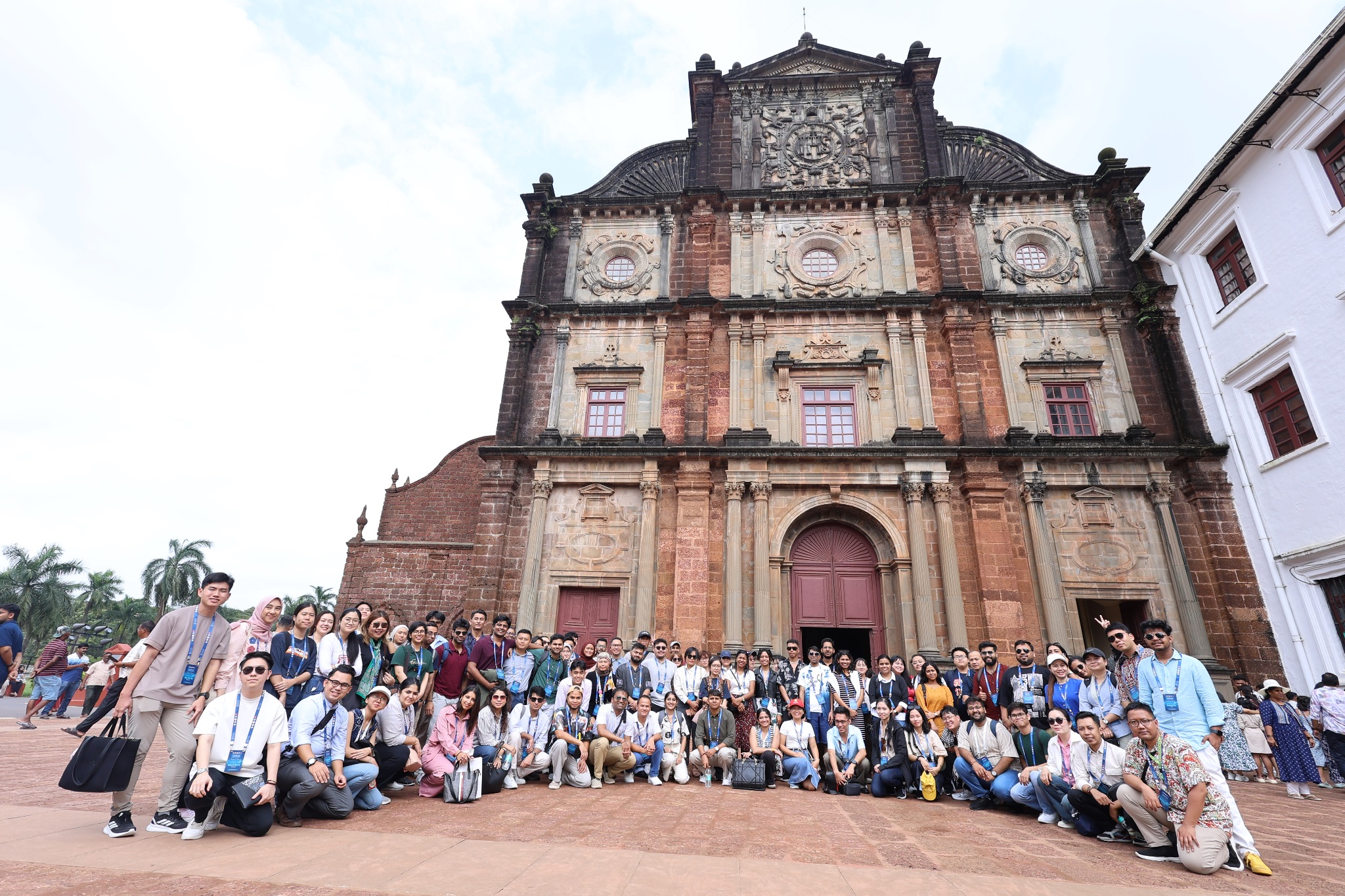
Delegates at the Basilica of Bom Jesus, a UNESCO World Heritage site in Goa
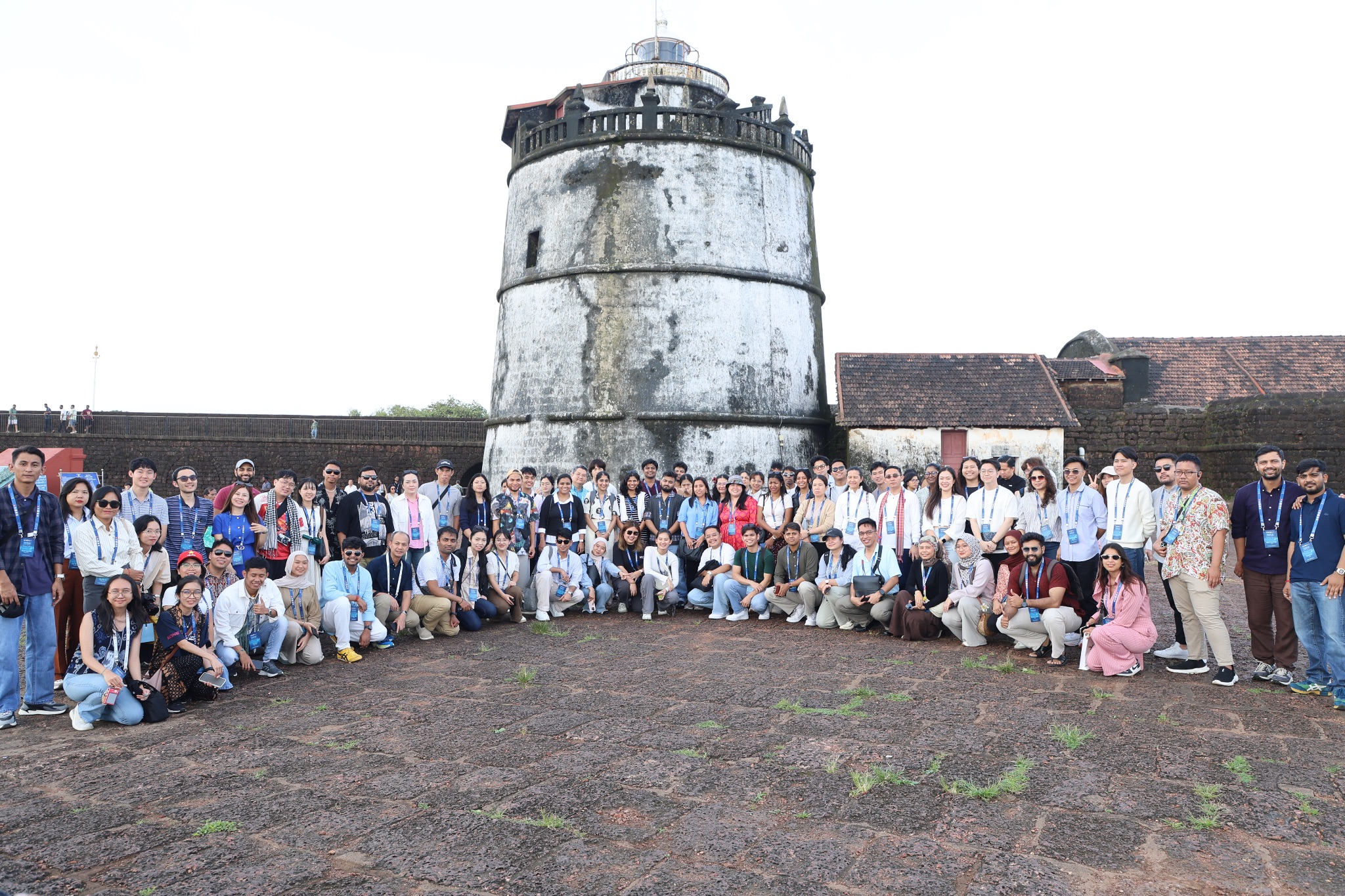
Delegates at Fort Aguada, a historic 17th Century Portuguese fort in Goa, India which overlooks the Arabian Sea.

